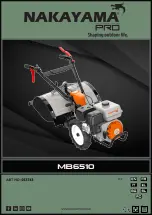
CVHM-SVN001C-EN
21
Brazing
Except as noted in the following, braze with the following
filler metals:
•
Braze all copper-to-copper joints with A.W.S. BcuP-6
filler metal.
•
Braze all copper-to-brass joints with A.W.S.
BcuP-6
filler metal using white or black brazing flux.
•
Braze all other joints with A.W.S. Bag-28 filler metal.
Bleed dry nitrogen through the lines while brazing to
prevent the formation of oxides which can contaminate
the oil and refrigerant systems.
Note:
Use silver soldering with 96% Sn-4% Ag (for
example, J.W. Harris Co. Stay Brite
®
) to replace
brazing when the heat from brazing would be
detrimental to the immediate or nearby parts.
Examples:
1. Joints next to threaded joints in which the copper or
brass threads become too soft and/or Loctite loses its
sealing capability due to excess heat.
2. Joints next to valves in which the valves cannot be
taken apart or are not recommended for brazing.
Final Installation Procedures
After the chiller has been moved to the equipment room
and reassembled under Trane supervision, leak testing,
and evacuation can be performed by Trane or under Trane
supervision. Upon verification of leak tightness,
installation can proceed for unit piping, wiring, etc. After
installation has been completed, fill out CTV-ADF001*-EN
(
CenTraVac™ Installation Completion Check Sheet and
Request for Trane Service
) to schedule the startup; the
chiller commissioning process can be completed by Trane
or under the supervision of authorized Trane personnel.
Note:
CTV-ADF001*-EN is also included in the “Forms”
section of CVHM-SVX001*-EN (
Installation,
Operation, and Maintenance: CVHM Water-cooled
CenTraVac Chillers with Tracer AdaptiView
Control
).
WARNING
Hazard of Explosion and Deadly Gases!
Failure to follow all proper safe refrigerant handling
practices could result in death or serious injury.
Never solder, braze or weld on refrigerant lines or any
unit components that are above atmospheric pressure
or where refrigerant may be present. Always remove
refrigerant by following the guidelines established by
the EPA Federal Clean Air Act or other state or local
codes as appropriate. After refrigerant removal, use dry
nitrogen to bring system back to atmospheric pressure
before opening system for repairs. Mixtures of
refrigerants and air under pressure may become
combustible in the presence of an ignition source
leading to an explosion. Excessive heat from soldering,
brazing or welding with refrigerant vapors present can
form highly toxic gases and extremely corrosive acids.




































